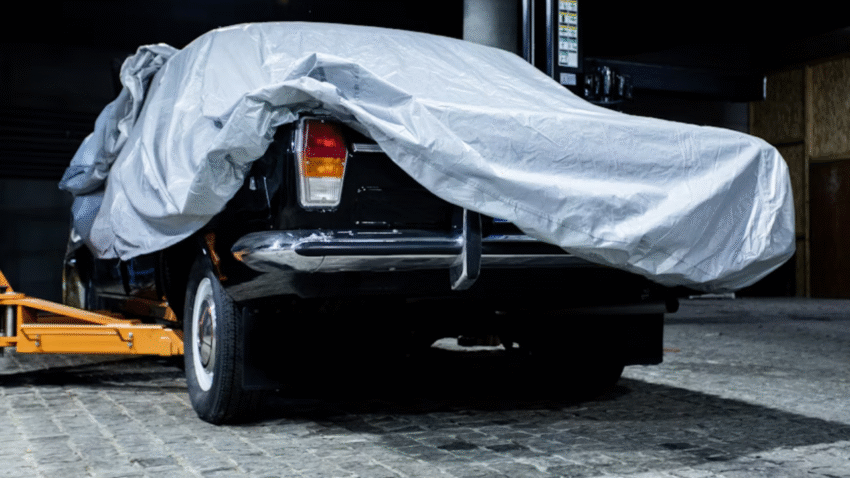Introduction
A dent in your garage door can make the entire front of your home look worn and neglected. Whether it’s from a stray basketball, a minor bump from your car, or storm damage, learning how to fix dents in a metal garage door can restore both its appearance and function. With the right tools and techniques, you can repair small to medium dents yourself—saving money and keeping your garage looking its best.
Why Fixing Dents in a Metal Garage Door Matters
Fixing dents isn’t just about curb appeal—it can also improve your garage door’s performance and longevity.
- Maintains smooth operation: Severe dents can cause the door to catch or stick.
- Prevents further damage: Untreated dents can weaken the metal and lead to rust or cracks.
- Improves home value: A well-maintained garage door boosts your property’s visual appeal.
- Saves money: Repairing a dent is far cheaper than replacing the entire panel.
Whether your garage door is made from aluminum or steel, a timely repair can keep it looking and working like new.
Step-by-Step Guide to Fixing Dents in a Metal Garage Door
1. Assess the Damage
First, determine the size and depth of the dent. Small dents (less than 3 inches in diameter) can usually be repaired with basic tools. Larger or deeper dents may require more advanced techniques or panel replacement.
Tip: Check both sides of the panel—sometimes a dent is more noticeable from the inside.
2. Gather Your Tools and Materials
Depending on the repair method you choose, you may need:
- Rubber mallet
- Block of wood
- Suction cup dent puller
- Aluminum foil
- Hair dryer or heat gun
- Compressed air can
- Auto body filler (for deeper dents)
- Putty knife
- Sandpaper (120–400 grit)
- Primer and matching paint
- Safety gloves and goggles
3. Prepare the Area
- Clean the dented section with mild soap and water.
- Dry thoroughly to ensure no moisture is trapped during repair.
- If using paint later, lightly sand the area to help new paint adhere.
4. Method 1: Rubber Mallet and Wood Block (For Shallow Dents)
- From inside the garage, place the block of wood against the center of the dent.
- Tap the wood gently with a rubber mallet, working from the edges toward the center.
- Check your progress after each tap to avoid over-correcting.
Pro Tip: Always use a rubber mallet to prevent adding new dents or damaging the panel finish.
5. Method 2: Suction Cup Dent Puller (For Medium Dents)
- Place the suction cup in the center of the dent.
- Press firmly to create suction.
- Pull outward in a smooth motion to pop the dent back into place.
- Repeat as necessary until the surface is level.
6. Method 3: Heat and Cold Technique (For Small to Medium Dents)
This method uses temperature change to expand and contract the metal, popping the dent out.
- Heat the dented area evenly with a hair dryer or heat gun for 30–60 seconds.
- Immediately spray the area with compressed air held upside down (this releases cold CO₂).
- The sudden temperature change may cause the dent to pop out as the metal contracts.
Safety Note: Wear gloves to protect your hands from heat and frost.
7. Method 4: Auto Body Filler (For Deep or Creased Dents)
- Sand the dented area to remove paint and create a smooth surface.
- Mix and apply auto body filler with a putty knife, pressing it into the dent.
- Let the filler dry completely according to the manufacturer’s instructions.
- Sand smooth with 120–400 grit sandpaper until flush with the surrounding metal.
- Apply primer, then matching paint to restore appearance.
8. Repaint and Finish
If paint was removed during repair, apply a rust-resistant primer and your garage door’s matching paint color. Blend the edges for a seamless finish.
Pro Tip: Keep leftover paint from previous touch-ups for easy color matching in the future.
Common Mistakes to Avoid
- Mistake: Using excessive force with a hammer.
Solution: Use a rubber mallet and gentle taps to prevent further damage. - Mistake: Skipping cleaning before repair.
Solution: Always clean the area to prevent trapping dirt or moisture under filler or paint. - Mistake: Not sealing repaired areas.
Solution: Always prime and paint exposed metal to prevent rust. - Mistake: Attempting to fix large, structural dents without proper tools.
Solution: Hire a professional for extensive damage. - Mistake: Overheating the metal during the heat and cold method.
Solution: Use moderate heat to avoid damaging paint or warping panels.
Extra Garage Tips & Hacks
- Regular Inspections: Check your garage door monthly for dents or rust spots—early repairs are easier.
- Protective Barriers: Install a parking guide or bumper inside the garage to prevent car-related dents.
- Weather Protection: Apply a clear coat to protect painted areas from fading and corrosion.
For more upkeep advice, see our guide on How to Lubricate a Squeaky Garage Door to keep your door moving smoothly after cosmetic repairs.
Conclusion
Fixing dents in a metal garage door is a straightforward process that can dramatically improve both appearance and function. Whether you use a rubber mallet, suction cup, heat and cold, or body filler, the key is to work carefully and patiently for the best results.
Final Tip: If the dent is severe or affects the door’s operation, consult a professional—sometimes replacing a single panel is the safest and most efficient choice.
CTA: Bookmark this guide and keep it handy for the next time your garage door needs a quick cosmetic repair.
